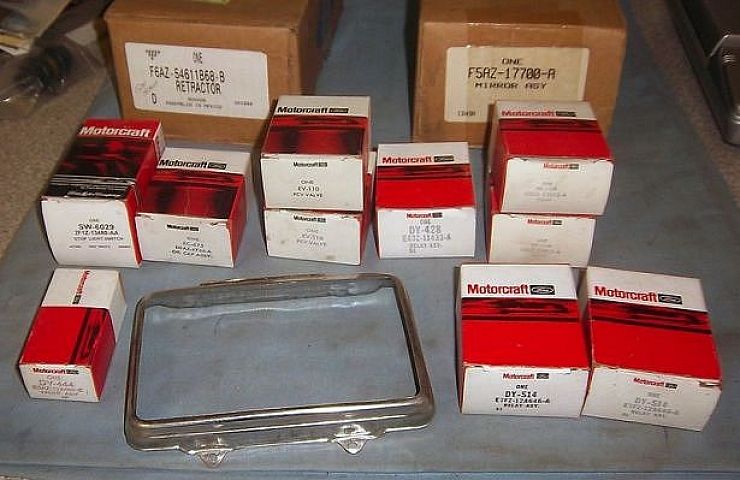A generation ago, shade tree mechanics and meticulous gearheads agreed that it was essential to buy automotive parts and accessories from the original maker of those items. That was a time when only original parts were deemed to be “genuine.” The implication: everything else was fake and subpar, requiring a painful sacrifice of quality to save a few bucks.
Today, the reliability, cost, fitment, and availability of original and aftermarket parts are, for the most part, on par with one another. With parity between the two categories, there’s never been a better time for gearheads shopping for parts. At the same time, it means you’ll have to make a judgment call on a case-by-case basis whether to go with an original versus third-party part or accessory.
To help you make these decisions, eBay Motors is posting a series of three articles on the topic. This is the first one, explaining the essential differences between OEM and aftermarket parts. In the second installment, we’ll offer some guidance on price, quality, and selection for the two categories. And finally, the third post will advise you on the best ways to buy aftermarket parts online.
To get started, let’s clearly define the two categories:
Original/OEM

These Toyota spark plugs are labeled as “genuine.”
The acronym O.E.M. stands for original equipment manufacturer. In other words, these are the exact parts that came on the vehicle and were produced by the same brand-name automaker that made the car or truck. Truth be told, the auto industry is made up of several layers (or tiers) of suppliers that are contracted by major car brands to produce those parts. So, you might find some OEM (sometimes reduced to OE) parts using the manufacturers’ name and logo—and other times the part will use branding from the supplier, like Denso or Bosch.
Aftermarket

Smaller aftermarket companies—like Brembo—can be creative, offering competitive high-quality specialty items.
If the part was not made by or directly for the carmaker, then it’s an aftermarket part. These parts were created for exactly the same purpose as the original item and often with the same materials—although you might notice slight variations in how they look and feel. In some, but not all, cases, the aftermarket producer purchased a license from the automaker or manufacturer to produce the part. The parts and packaging might be branded by the aftermarket company, or the box could be completely generic. In many cases, the aftermarket producer specializes in a particular kind of component—like an air filter, shock, or spark plug. Aftermarket companies often invest a lot of time and money into matching or improving the quality or performance of the original part produced for the car.
The Key Question of Price
Which type of part will save me money? The rule of thumb is that aftermarket parts are less expensive. Traditionally, an aftermarket company has less overhead, lower marketing costs, less stringent guidelines, and not as much pressure to add profit margins, so they can offer discounted prices. But exactly how much you might save depends just as much on the specific aftermarket brand, the quality of the part, and the seller. At the same time, in recent years, car dealerships have come to realize that they need to compete on aftermarket parts—and are pricing accordingly.
So, while it’s usually the case that you’ll save money by going with the aftermarket item, it can be worth it to do a quick price comparison. Use your common sense: if one part is way less expensive than competitors in the category, then logically you might, as the saying goes, get what you pay for.
In our next installment, we’ll discuss selection, quality, and brand.
See Car & Truck Parts for sale on eBay.





